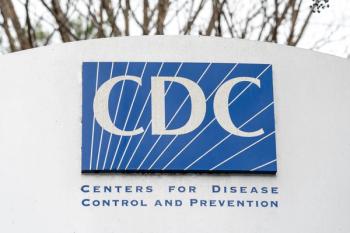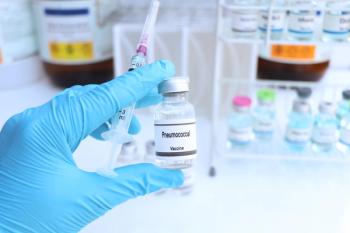
Progress in Dermatology Paves the Way for Vaccine Development
Researchers reviewed current understandings of the role vaccines play in dermatology, what gaps persist, and what future research is necessary.
With significant progress made in researchers’ understanding of dermatological diseases, a pathway has been made for the development of targeted vaccines, according to data published in Vaccines.1
“Dermatological vaccines have emerged as critical tools in preventing and managing a wide spectrum of skin conditions ranging from infectious diseases to malignancies,” wrote the authors. “By synthesizing evidence from existing literature, this review aims to comprehensively evaluate the efficacy, safety, and immunogenicity of vaccines used in dermatology, including both approved vaccines and those currently being researched.”
While vaccines for a variety of skin conditions may be under development, the 3 most common dermatological diseases associated with vaccines are chickenpox (varicella), shingles (zoster), and mpox.2 With the chickenpox vaccine being one of the first available for prevention of skin disease in 1995,3 the shingles vaccine was later approved in 20064 and the mpox was approved much later in 2019.5
READ MORE:
Despite constant development of safer and more effective formulas for the aforementioned vaccines, these 3 vaccine-preventable diseases make up a small portion of the 40 diseases that currently have vaccines available for prevention, or vaccines are currently being developed.1 Among previously approved vaccines and those under development, researchers aimed to conduct a thorough review of vaccines of dermatological interest.
They conducted a literature review of PubMed, clinicaltrials.gov, and Embase databases to identify studies that explored vaccines for dermatological diseases. The search included articles between January 2013 and June 2024. While search terms focused on a variety of topics related to skin disease and vaccines, articles had to meet 5 specific criteria to be included in the final analysis.
Those 5 criteria were: “Conditions targeted: vaccines designed to prevent or treat dermatological conditions; Population: studies investigating the efficacy and safety of dermatological vaccines in human populations without known underlying health conditions; Study types: clinical trials and randomized controlled trials (RCTs); Publication date: studies published within the last 10 years (January 2013 to June 2024); and Language: studies published in English to ensure accessibility.”1
Throughout the past 10 years, development of vaccines for preventing skin diseases has made significant progress. Outside of mpox, chickenpox, and shingles—as well as mentions of leprosy and smallpox—researchers uncovered current exploration of vaccines for a total of 10 skin diseases. Those diseases included acne vulgaris; human papillomavirus; melanoma; atopic dermatitis; warts; mucocutaneous candidiasis; buruli ulcer (BU); leishmaniasis; hand, foot, and mouth disease; and Group B Streptococcus.
While many do not have a specific vaccine designed to prevent each disease, there are vaccines available or under development that cover a multitude of these skin conditions. For example, there is no specific vaccine available for the prevention of BU. However, the Bacillus Calmette–Guérin vaccine is available for prevention of BU and leprosy, yet the vaccine was originally designed for prevention of tuberculosis.
“Notable progress has been made in elucidating the immunopathogenic processes underlying dermatological diseases, paving the way for the development of targeted vaccines for preventative and therapeutic purposes,” continued authors of the study.1 “In line with the goals of its Immunization Agenda 2030, WHO has identified a new list of 17 high-priority global endemic pathogens for vaccine research and development, of which skin pathogens account for at least 8, reinforcing the need for continued focus in this area.”
Upon this literature review, researchers identified a promising future featuring a variety of vaccines protecting against skin conditions. Despite recent and ongoing advancements in vaccine technology, they believe considerable progress is still yet to be made. While the current review served its purpose in identifying current developments, future research is suggested to focus on refining vaccines, addressing gaps, and translating these developments into clinical tools.
“Challenges remain in standardizing outcome measures for clinical trials, ensuring vaccine safety across diverse populations, and translating results from animal models into human subjects,” concluded the authors.1 “Continued research is required to refine these vaccines, address existing gaps, and translate these innovations into effective clinical treatments.”
READ MORE:
Are you ready to elevate your pharmacy practice? Sign up today for our
References
1. Goh E, Chavatte JM, Lin RTP, et al. Vaccines in dermatology-present and future: a review. Vaccines (Basel). 2025 Jan 26;13(2):125. doi: 10.3390/vaccines13020125.
2. Recommended vaccinations for adults. CDC. November 22, 2024. Accessed June 20, 2025. https://www.cdc.gov/vaccines/imz-schedules/adult-easyread.html
3. Chickenpox (varicella) vaccine safety. CDC. July 31, 2024. Accessed June 20, 2025. https://www.cdc.gov/vaccine-safety/vaccines/varicella.html
4. Newer shingles vaccine edges out its predecessor. Jefferson Health. Accessed June 20, 2025. https://www.jeffersonhealth.org/your-health/living-well/newer-shingles-vaccine-edges-out-its-predecessor
5. WHO prequalifies the first vaccine against mpox. WHO. September 13, 2024. Accessed June 20, 2025. https://www.who.int/news/item/13-09-2024-who-prequalifies-the-first-vaccine-against-mpox
Newsletter
Pharmacy practice is always changing. Stay ahead of the curve with the Drug Topics newsletter and get the latest drug information, industry trends, and patient care tips.






































































































































